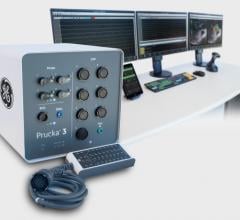
June 7, 2022 — Stereotaxis, a global leader in innovative robotic technologies for the treatment of cardiac arrhythmias, announces the publication of a special issue of the Journal of Atrial Fibrillation & Electrophysiology (JAFIB-EP) focused on the use of Robotic Magnetic Navigation (RMN) for the treatment of cardiac arrhythmias. The Robotics Special Issue was published in collaboration with the Society for Cardiac Robotic Navigation and includes sixteen peer-reviewed publications that document the clinical value of Robotic Magnetic Navigation, new technologies, and refined workflows across a broad spectrum of cardiac arrhythmias. The journal will also incorporate robotics as a recurring section in future editions.
Physicians from 20 hospitals and universities throughout North America, Europe and Asia contributed to the sixteen publications in the Robotics Special Issue. The complete issue can be accessed at www.JAFIB-EP.com. The publications cover a wide range of topics including:
- Historical review and evolution of Robotic Magnetic Navigation
- Reviews of clinical outcomes from large subsets of patients with atrial fibrillation, ventricular tachycardias and supraventricular tachycardias
- Robotics enabling fluoro-less cardiac ablation procedures without the use of x-ray radiation
- The use of Stereotaxis robotic technology in conjunction with novel preoperative imaging and a broad array of electrophysiology mapping technologies
- Demonstration of TeleRobotic technology for remote catheter navigation
“Robotics represents increasingly important technology for the field of electrophysiology,” said Dr. Andrea Natale, Editor-in-Chief of the Journal of Atrial Fibrillation & Electrophysiology. “We are delighted to collaborate with the Society for Cardiac Robotic Navigation on this special issue and to contribute to the advancement of clinical science and awareness.”
“We seem to be at an important inflection point in the evolution of robotic magnetic navigation in electrophysiology,” said Dr. J. Peter Weiss, President of the Society for Cardiac Robotic Navigation. “As the field continues to optimize safety, efficacy and efficiency in the care of arrhythmia patients, the increasing adoption of robotics and automation is poised to play an essential role. We hope this special edition provides education, motivation and inspiration to all who are interested in moving the field forward.”
The Journal of Atrial Fibrillation & Electrophysiology was founded in 2008. Its mission is to provide a forum for communicating original and innovative research findings that have relevance in better understanding the pathophysiology of cardiac arrhythmias and improving the treatment and survival of patients. Tens of millions of individuals worldwide suffer from arrhythmias – abnormal heart rhythms that result when the heart beats too quickly, too slowly or with an irregular pattern. When left untreated, arrhythmias may significantly increase the risk of stroke, heart failure and sudden cardiac arrest. Robotic Magnetic Navigation introduces the benefits of robotic precision and safety to cardiac ablation. Robotic cardiac ablation is performed using a soft magnetic catheter navigated inside the heart by a physician seated at a computer cockpit. The physician navigates the catheter using precise, robotically actuated magnets positioned on either side of the patient.
“A growing body of scientific literature continues to support the differentiated clinical value of robotics for the treatment of a broad range of arrhythmias,” said David Fischel, Chairman and CEO of Stereotaxis. “We are delighted to be advancing the frontiers of patient care and technology in electrophysiology.”
For more information: www.stereotaxis.com


 April 29, 2025
April 29, 2025 









